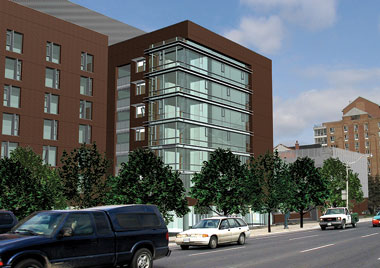 For more than four decades, the familiar sight of The Salvation Army's lighthouse on the corner of Jarvis and Shuter Streets in Toronto stood as a beacon of hope to those in despair. Thousands whose lives were torn apart by the devastating consequences of alcohol and drug addiction looked to the Toronto Harbour Light to help them steer a straight course to sobriety, stability and serenity. Miracles of God's grace were witnessed as lives were changed through the healing power of Christ and the faithful ministry of a host of trained counsellors and support staff.
For more than four decades, the familiar sight of The Salvation Army's lighthouse on the corner of Jarvis and Shuter Streets in Toronto stood as a beacon of hope to those in despair. Thousands whose lives were torn apart by the devastating consequences of alcohol and drug addiction looked to the Toronto Harbour Light to help them steer a straight course to sobriety, stability and serenity. Miracles of God's grace were witnessed as lives were changed through the healing power of Christ and the faithful ministry of a host of trained counsellors and support staff.
This month, after several years of planning, fundraising, temporary relocation and costly construction, a new state-of-the-art facility will be officially opened to accommodate the growing need for this ongoing and much-needed Army ministry. The new building, to be known as Toronto Harbour Light Ministries, will encompass a wide range of activities that demonstrate how the Harbour Light Corps has moved on from its foundations as a residential addictions treatment centre.
Restoring Broken Lives
From its earliest days in London, England, The Salvation Army realized the need of ministering to those whose lives had been negatively impacted by the effects of alcohol. This resolve remains at the heart of the Army's Harbour Light ministry as it seeks to restore broken lives and offer physical and spiritual restoration—something it's been doing on the streets of Toronto for more than half a century.
Recent years, however, have brought a shift in focus. With the closure of other downtown Army ministries, the renamed Harbour Light Community Church has become a spiritual home for many in the inner-city core. Captain Andrew Morgan, former corps officer and now executive director, acknowledges this change. “We still offer addictions treatment,” he admits, “but a new day has dawned. Through strategic partnerships within the downtown community, we also offer a 365-days-a-year breakfast ministry to those living on the city streets, ESL courses for new immigrants and a transitional housing program designed to help people get back on their feet and learn basic life skills while looking for permanent accommodation.”
“By moving toward integrated mission we can help build the Kingdom of God together”
Each of these components has been operating semi-independently for some time out of different facilities. With the opening of the new building later this month, for the first time they will all come under one roof. Morgan acknowledges that this won't be an easy transition but says it is a positive step forward. “It's all about integrated mission,” he comments. “We have to be on the same page in terms of goals and what we want to accomplish. If all we do is integrated ministry (i.e. bringing separate ministry units together under one roof) it will be less effective, but by moving toward integrated mission (moving forward with the same goals) we can help build the Kingdom of God together.”
Part of that transition is a new wave of outreach extending into Moss Park, where corps members and volunteers from Harbour Light are now holding weekly Bible studies, women's groups and children's programs. “If you were to ask residents in downtown Toronto about the Harbour Light,” says Morgan, “you'd find a variety of responses. Some would primarily identify it as the place they go to church on Sunday. Others know it as the place they go to learn English or where they send their kids to Sunday school. We have moved on from being a residential addictions treatment facility, although that's still at the core of many of our activities.”
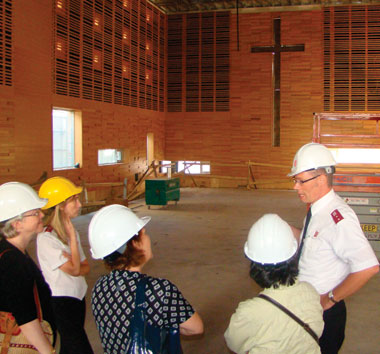 Changing With the Times
Changing With the Times
To facilitate this ever-expanding ministry and its various satellite ventures, Salvation Army administration decided to move ahead with a proposal for a new, larger facility to replace the existing building that had stood since 1961. Money for the $30-million project was raised through a capital campaign, city building permits were obtained, and in October 2004, staff and clients, along with members of Harbour Light Corps, vacated the premises and moved into temporary accommodations. Residents and staff moved into the new building in March, and on May 22 it will be officially opened by Commissioner William W. Francis, territorial commander.
The facility will bring together four main ministry components. These include an 85-bed residential substance abuse treatment program, a transitional housing complex with 98 bachelor apartments, the Toronto Harbour Light Community Church and Salvation Army immigrant and refugee services.
This bold, new venture heralds the dawning of a new day. For residents of Toronto's inner city, the light still stands as a beacon of hope pointing the way to Christ. Long may it continue.
Toronto Harbour Light—A Brief History
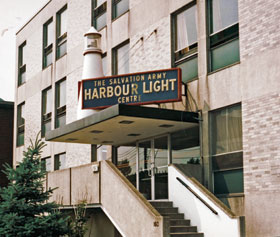 Following the opening of Vancouver Harbour Light in 1953—the first of its kind in Canada—Major and Mrs. Josh Monk were appointed in 1954 to research the possibility of opening a similar work in Toronto. In December of that year, the Toronto Harbour Light Corps was officially opened in a renovated building at 280 Queen Street East. Housing capacity was limited to five men plus a night watchman. The four-fold program included classes in physical and spiritual rehabilitation and group therapy discussions.
Following the opening of Vancouver Harbour Light in 1953—the first of its kind in Canada—Major and Mrs. Josh Monk were appointed in 1954 to research the possibility of opening a similar work in Toronto. In December of that year, the Toronto Harbour Light Corps was officially opened in a renovated building at 280 Queen Street East. Housing capacity was limited to five men plus a night watchman. The four-fold program included classes in physical and spiritual rehabilitation and group therapy discussions.
The ministry expanded so quickly that more accommodations were soon needed and, in January 1961, a new centre was opened at 160 Jarvis Street. With a capacity of 85 beds, the new location allowed staff to minister to a growing clientele. Since that time, thousands of men have benefited from the program and achieved a life of contented sobriety. Many more have attended the gospel services held up to four times a week, afterwards enjoying a hot meal or bowl of soup before heading back to life on the streets.
The work at Jarvis Street soon revealed that after many years of heavy drinking, some men required a longer period of rehabilitation. In 1966, the Army purchased an 80-hectare farm near Glencairn, Ont. Christened Hope Acres, the facility was converted into a series of workshops, enabling the men to update neglected trade skills and allowing them to benefit from a much longer time of group therapy and personal counselling.
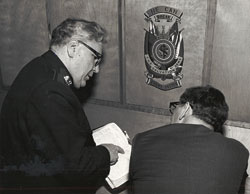 Further expansion in Toronto came with the opening of the Queen Street West site in 1968, serving up to 80 unemployed men, as well as seniors unable to cope with the rising cost of living.
Further expansion in Toronto came with the opening of the Queen Street West site in 1968, serving up to 80 unemployed men, as well as seniors unable to cope with the rising cost of living.
As early as the 1980s, discussion began about the need for a new facility to accommodate the ever-expanding Harbour Light ministry. Operating as a full-fledged Salvation Army corps, activities such as Sunday school and women's ministries were taking place. Former clients who had graduated from the treatment program, along with their wives and families, were being enrolled as soldiers and taking prominent leadership roles. New growth necessitated an enlarged facility that will provide for all these needs and more.




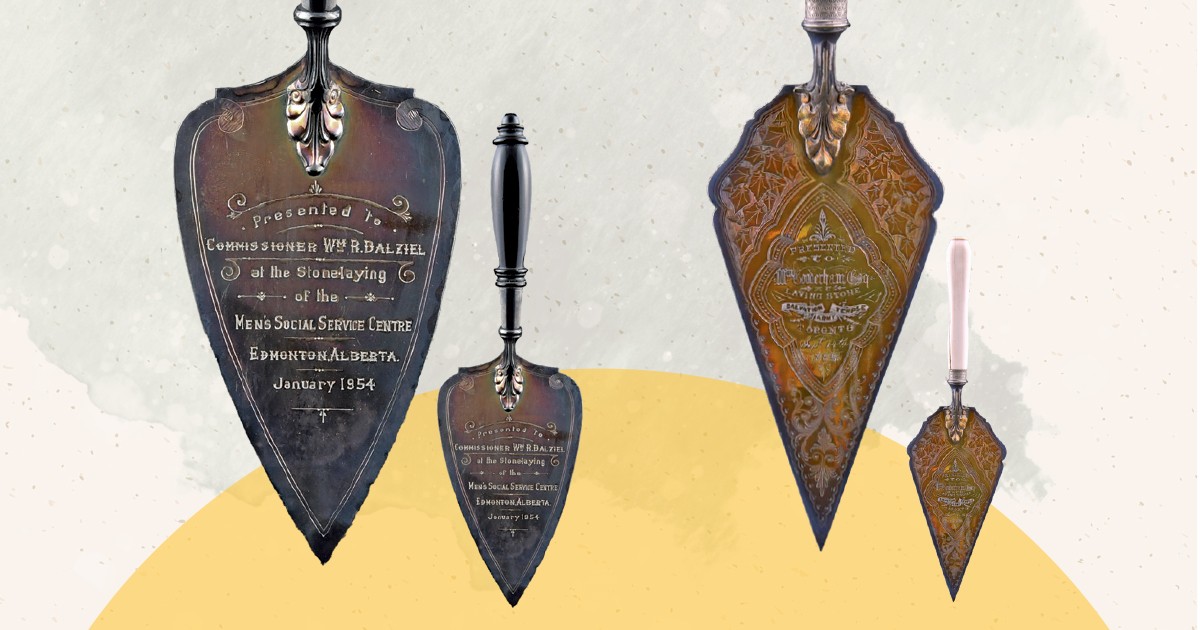




George E Prior Major [R]